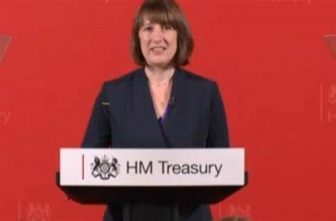
There are growing that potential tax changes in the Autumn Budget next month may curb demand and increase downwards pressure on prices in higher-value markets
Rachel Reeves has not yet delivered her Budget but it is already having repercussions in the property market.
The government has said private schools will be charged VAT from January, but other announcements on 30 October may focus on capital gains tax (CGT), non doms, pension tax relief and inheritance tax.
By Tom Bill, head of UK residential research at Knight Frank, commented: “While there was a 34% increase in the number of sales in London in July and August compared to the five-year average, there was a 16% decline above £2 million, Knight Frank data shows.
“When you consider that £2 million-plus sales accounted for 22% of the £11.7 billion raised in stamp duty last year, it highlights the risk of tax rises having unintended consequences.
“The other way in which the Budget is impacting the property market relates to CGT and speculation that it may increase from its current level of 24%.
“Supply looks set to rise this autumn, which will be driven in part by owners attempting to sell before any changes are introduced.”
In an indication that more sellers are planning to list their property, the number of market valuation appraisals in August was 25% above the five-year average in London, Knight Frank data shows. Any future rise in supply would increase downwards pressure on prices.
“We are seeing a significant increase in market appraisals and listings from clients who have residential lettings portfolios,” said Andrew Groocock, chief operating officer of Knight Frank’s estate agency business.
“There is a feeling among many owners that they are better off bringing their properties to the market now and perhaps accepting a price that is 5%-10% lower, rather than running the risk of a CGT increase after the Budget.”
Average prices in prime central London (PCL) continued to edge down on a monthly basis in August. A fall of 0.2% took the annual change to -2.3%, which was the 16th month in a row the annual change was negative.
In fact, annual price growth in PCL has not been above 3% since March 2015 and prices remain 18% down on their last peak in August 2015.
Prices in prime outer London were flat in the 12 months to August as lower-value, needs-driven property markets perform more strongly. By comparison, prices in POL are 8% below their last peak in July 2016.
As far as lettings is concerned, rental value growth continued its return to earth in August as supply climbed and demand fell. Overall, rents rose 2.1% in prime central London (PCL) and 2.2% in prime outer London (POL).
In both cases, it was the lowest figure since the summer of 2021 when the long-let market was flooded with short-let properties during the pandemic. Supply subsequently fell sharply, in part thanks to landlords selling up during a stamp duty holiday, which meant rents were growing by more than 20% in the early months of 2022 as demand far exceeded supply.
The chart below shows how the market has rebalanced and put downwards pressure on rents.
The number of new listings in August was 8% below the five-year average, Rightmove data shows. That compares to much steeper declines in recent years.
Meanwhile, the number of new prospective tenants was 11% below the five-year average in August, partly due to a decline in overseas students applying to study in the UK.
The number of students accepted from China, which accounted for the largest proportion of overseas students in 2021/22, dropped 6% to 10,950 this year, according to UCAS data.
UK universities may have reached “peak China”, according to comments last year from the head of the Universities and Colleges Admissions Service, for reasons that include visa and tax changes as well as the fact rents have risen in recent years.
“International students coming to the UK are tending to focus on London more closely than other cities” said John Humphris, head of Relocation & Corporate services at Knight Frank. “With fluctuations in applications from China, but notable increases from Turkey and Canada, London remains an evergreen destination in spite of competition from other global education hubs, notably Australia”
Average rents in PCL are 34% higher than they were before the pandemic in February 2020, while the equivalent rise in POL is 29%.
While rents are normalising, there is a risk that upwards price pressure may intensify as more landlords sell due to possible legislative changes.
First, there is speculation that capital gains tax may increase from its current level of 24% in next month’s Budget.
In an indication that more sellers are planning to list their property ahead of possible changes, the number of market valuation appraisals for sale in August was 25% above the five-year average in London, Knight Frank data shows. Conversely, any future rise in supply would increase downwards pressure on prices.
“We are seeing a significant increase in market appraisals and listings from clients who have residential lettings portfolios,” said Andrew Groocock, Chief Operating Officer of Knight Frank’s estate agency business.
“There is a feeling among many owners that they are better off bringing their properties to the market now and perhaps accepting a price that is 5%-10% lower, rather than running the risk of a CGT increase after the Budget.”
Second, there is uncertainty over the revived Renter’s Reform Bill, as previously explored. Measures could include making it harder to evict tenants and tighter rules around the green credentials of lettings properties, according to recent press reports.


Comments are closed.